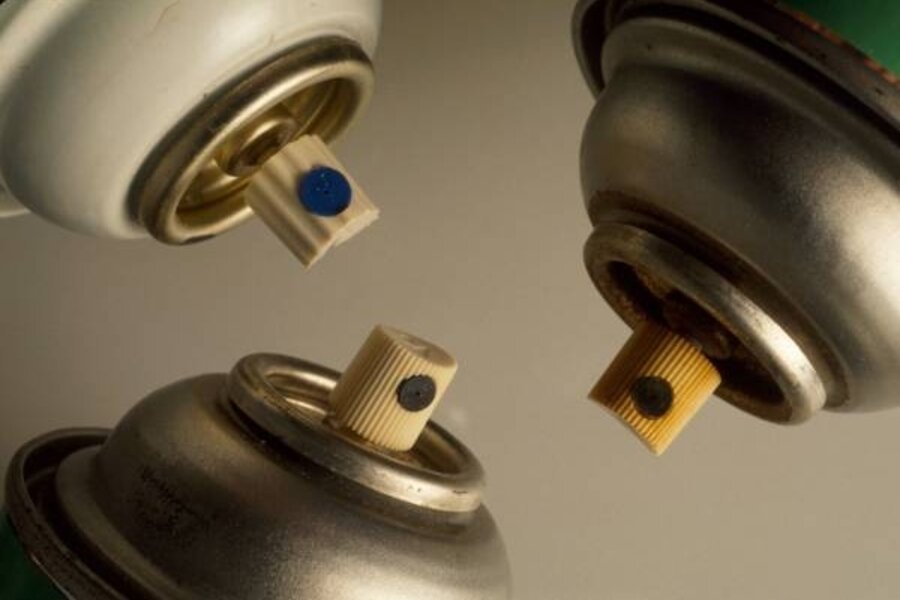The latest on hydrofluorocarbons
Loading...
In the 1970s, scientists hypothesized that chlorofluorocarbons (CFCs), chemicals commonly used in refrigerants and aerosol cans, might deplete the ozone layer in Earth’s stratosphere. Ozone filters out ultraviolet rays from the incoming sunlight, protecting life from the harmful rays.
After much resistance from industry interests, the US, Canada, and Norway banned CFC-containing aerosol cans in 1979. But when scientists discovered an ozone hole over Antarctica in the mid-1980s, countries around the world began phasing out the ozone-destroying chemicals. A new class of ozone-friendly molecules called hydrofluorocarbons (HFCs) replaced them.
Now, global warming is a concern. And a new study in the Proceedings of the National Academy of Sciences finds that HFCs, some of which are thousands of times more powerful than carbon dioxide as a heat-trapping gas, could become a significant factor in future warming.
HFCs are currently responsible for less than 1 percent of human-caused warming. But if current trends continue, that could rise to between 7 and 12 percent of what CO2 contributes by 2050.
This accounts for expected growth in air conditioning, refrigerants, and other technology, as well as increased HFC usage as CFCs are phased out in the coming decade.
However, say the authors. If we begin reducing HFCs by 4 percent yearly now, their impact on climate would peak in 2040 and begin declining before 2050.





